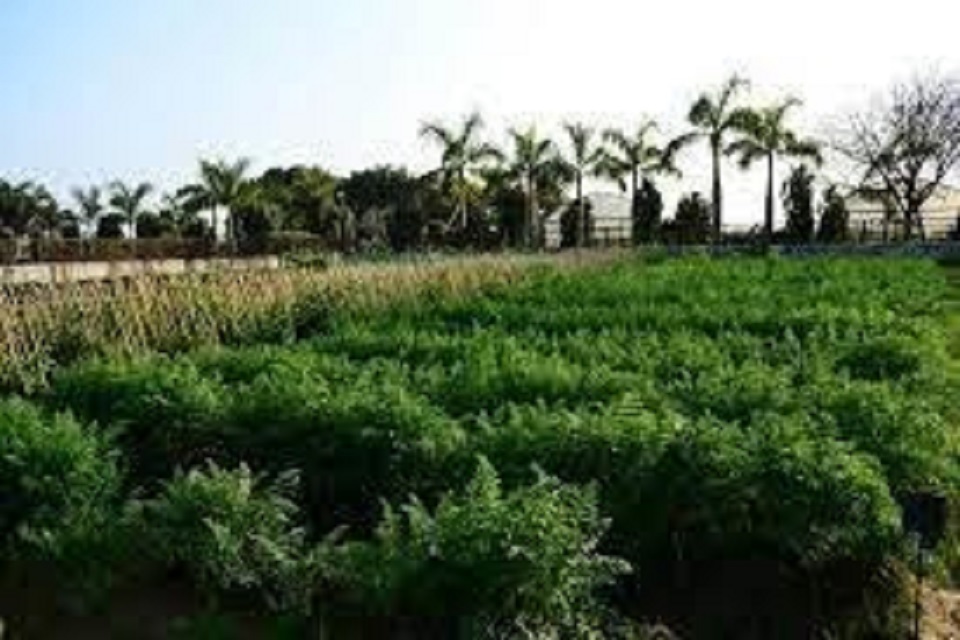Vegetables that like to grow under full heat enjoy a long day in a warm climate and want to grow well in Harsh hot-headed summer. The summer season is a good season for those vegetables and fruits and the cultivation as well.
Here is a good thing about summer vegetable plants and fruit plants: you can continue the same ones in the monsoon season. Summer is filled with dehydration, skin sensitivities, and mineral deficiencies etc.
Our primary goal should include summer fruits and vegetables that fulfil the criteria to keep us refreshed, hydrate, prevent our skin problems, and prevent many deficiencies. Cultivation of these plants needs excess sun heast as well as a good farm vehicle. Farmers need a better vehicle, which can give its complete output. They mainly prefer Mahindra Tractor for any kind of farming. Here we have the list of some vegetables and fruits, which grow only in the summer season in India.
List Of Vegetables
1. Okra
A flowering plant, Okra is grown in many regions of the country, locally known as ladies fingers or bhindi. Besides the farm, you can plant Okra directly in your garden 3 to 4 weeks before June starts. Plant okra about ½ to 1 inch deep and 12 to 18 inches apart. You can soak the seeds overnight in warm water to help fast germination.
Okra grows in spring or early summer once the threat of freeze or cold has passed. To prevent the seeds from spoiling, the soil should have warmed to at least 65 degrees.
Besides, it is a vegetable that is grown in almost every state of India. To grow Okra well, you should keep the plants well-watered throughout the summer months. Okra is a seasonal item that can only be found in the summer, so go to your local fresh market, grab some and give them a try.
2. Pumpkin
Pumpkins grow best at daytime temperatures of around 19°C to 24°C, and while many varieties tolerate heat, growth and fruiting may be diminished at temperatures above 85°F. For better growing and Cure pumpkins, store in a cool, dry, dark place until October.
Pumpkins belong to the gourd vegetable family that grow very well during summer. The size of a pumpkin may differ from 5 kg to 40 kg. Because of the enormous fruit size, the pumpkin climber can crawl on the ground rather than on a trellis.
3. Bottle Gourd
Bottle gourd should be grown in open, bright and warm locations. Bottle gourd plants require plenty of watering for growth.
It is easy to grow bottle gourd by seed sowing method during the year. Summer and monsoon are the best time to plant seeds. Seeds are sown directly in small holes, which germinate in 7-8 days. Bottle gourd seedlings are very fast-growing and quickly form the habit of a climber.
4. Cucumber
Cucumbers are grown in warm weather and require particular soil temperatures for germination. The cucumber growing season is restricted to summer in many climates. But, you can enjoy a late-season harvest by growing fall cucumbers.
5. Brinjal
Also known as eggplant, it is a warm-season crop sensitive to the frost season. There are many varieties of different sizes, colours and shapes. The brinjal can be grown around the year in South India, the main sowing being done from July to August.
6. Amaranth
Amaranth has been planted as a seed for 8,000 years. The yield of seed amaranth is similar to rice or maize. Amaranth plants are found growing all over India in farmlands, roadsides & gardens, growing even in summers.
Amaranth prefers a warm climate, full hot-headed sun, and well-drained soil. It grows tall and can touch 5 feet high on top. Flowers are produced on their long straight stems, are long-lasting, and will grow from mid-summer until the first hard frost.
7. Summer Squash
They need full heat from the sun, compatible moisture, and rich, organic soil. You can start squash by seed directly in the garden once all the frost has passed. You can also plant the seeds indoors in 3″ or 4″ pots a few weeks earlier.
Squash is a warm-season plant, so wait until the air temperature reaches 70 degrees F before planting. Starting with young solid squash plants will speed you on your way to harvest time.
List Of Fruits
1. Mango
Mango the king of fruits in the Indian subcontinent. There are many varieties grown all over India. There are well planned commercial mango orchards with excellent, authentic varieties in India. Mango season starts in summer and continues till the middle of the monsoon.
Mango trees need constant warm temperatures. They can’t tolerate long-term frost or cold states. If climatic temperatures drop below 40 degrees F, the cold can destroy both the flowers and small fruits, even for a short period.
2. Black Berry (Jamun)
Jamun considers the black fruits with a combination of sweet, lightly sour and astringent flavour and tends to colour the tongue purple. It is a wild evergreen tree that grows in India. A slow-growing species can reach heights of up to 30 m and live more than 100 years.
3. Watermelon
Watermelons grow at their ideal temperature of 70-90 degrees Fahrenheit during the day and 65-70 degrees at night. But, watermelons tolerate hot summer temperatures and can quickly grow even in more desirable conditions once planted.
These super popular fruits are widely grown in India during summer. Sweet varieties like sugar candy are more preferred. The plant is an annual climber, and around 2-3 fruits per plant are formed.
4. Plum (Aloo Bukhara)
Plum, or “Aloo Bukhara”, as we Indians mainly like to call it, is a tasty sweet fruit commonly found in the hilly areas and the north plain regions of our country. Plum lives in the Rosacea family and genus prunus domestica. The same family also considers the varieties of almonds, peaches etc.
Plum trees produce fruit between June and September, after growing in late winter to early spring. Small varieties can produce fruit a year earlier, around 2 to 5 years after planting. Plum trees can produce more fruit as they grow, suitable primarily to support the extra weight.
5. Peach
The ideal time to grow Peach trees in climates with hot summers and winter temperatures colder than 45°F. Most peach varieties need time in freezing temperatures to grow effectively.
6. Papaya
A great fruit that you can eat during summers is papaya. You can eat this fruit dried, ripe or unripe. It is included to be an all-around summer fruit. It is loaded with potassium, Vitamin C (for building collagen to provide a texture of skin and hair), Vitamin K (for strong bone), and Vitamin A (for healthy hair and glowing skin. This fruit also includes papain, a mixture that is good for your gastrointestinal health.
7. Melon
Melons are also considered summer fruits that start from seed as the climate warms up in spring. However, in areas where the weather stays warm and pleasant, they can grow through the year.
Melons prefer warm weather. Sow seeds on the farm about 2 weeks after the last frost date when soil temperatures are about 65℉.
Farming Of Summer Fruits And Vegetables
They need warm temperatures to grow and are harvested only during summertime. Most of these summer fruits are very popular in terms of taste, flavour.
The primary and widespread steps for summer season plant farming include soil, sowing, adding manure and fertilizers, irrigation, harvesting and storage. To this complete process and better cultivation, farmers mainly choose VST Shakti Tractor. This tractor is very robust and lives up to their expectations, also gives satisfactory results.
We hope you like this content about summer fruits and vegetables. Keep yourself refreshed and healthy in this hot-headed summer season. For more information about crops, farming and technologies, stay connected with TractorGuru.


